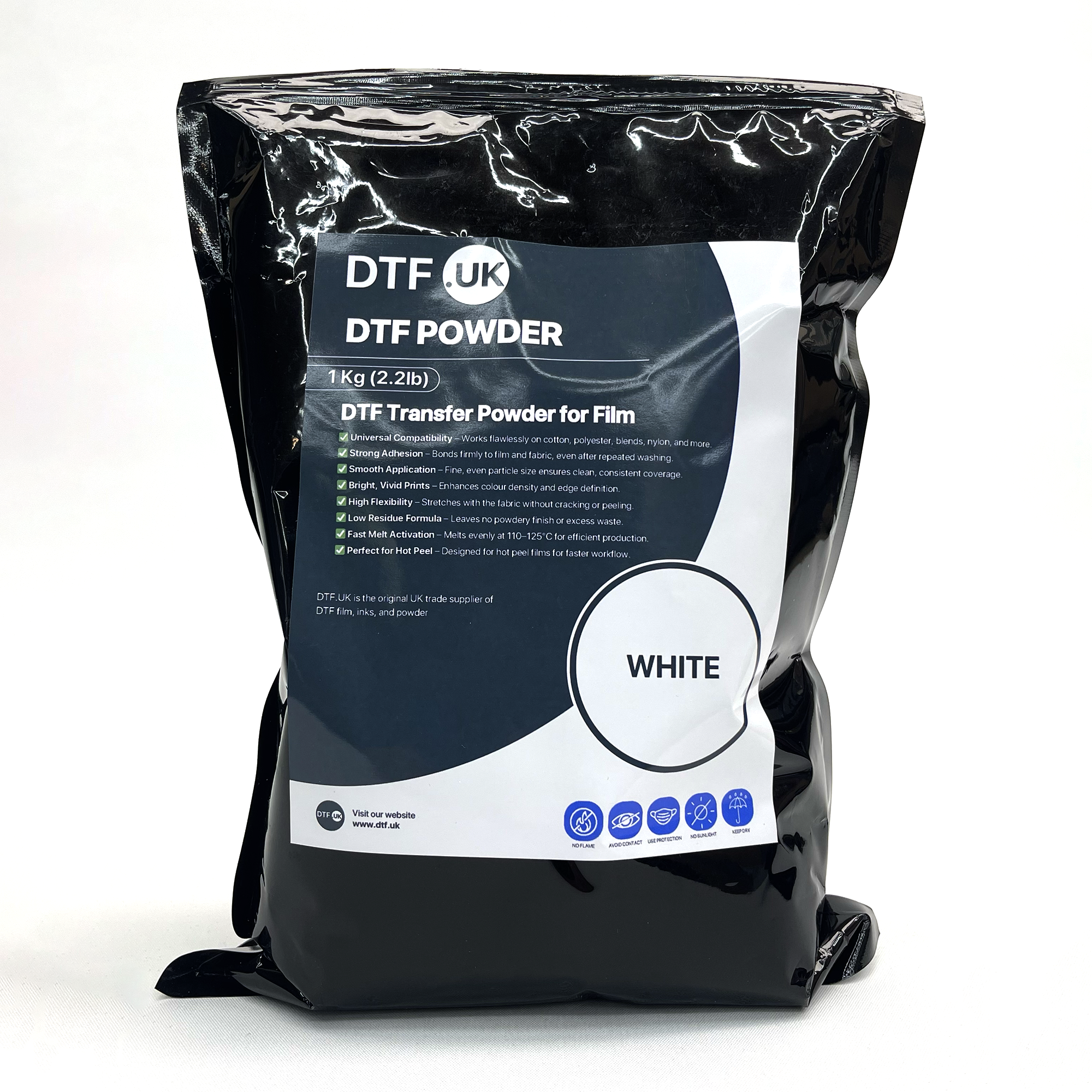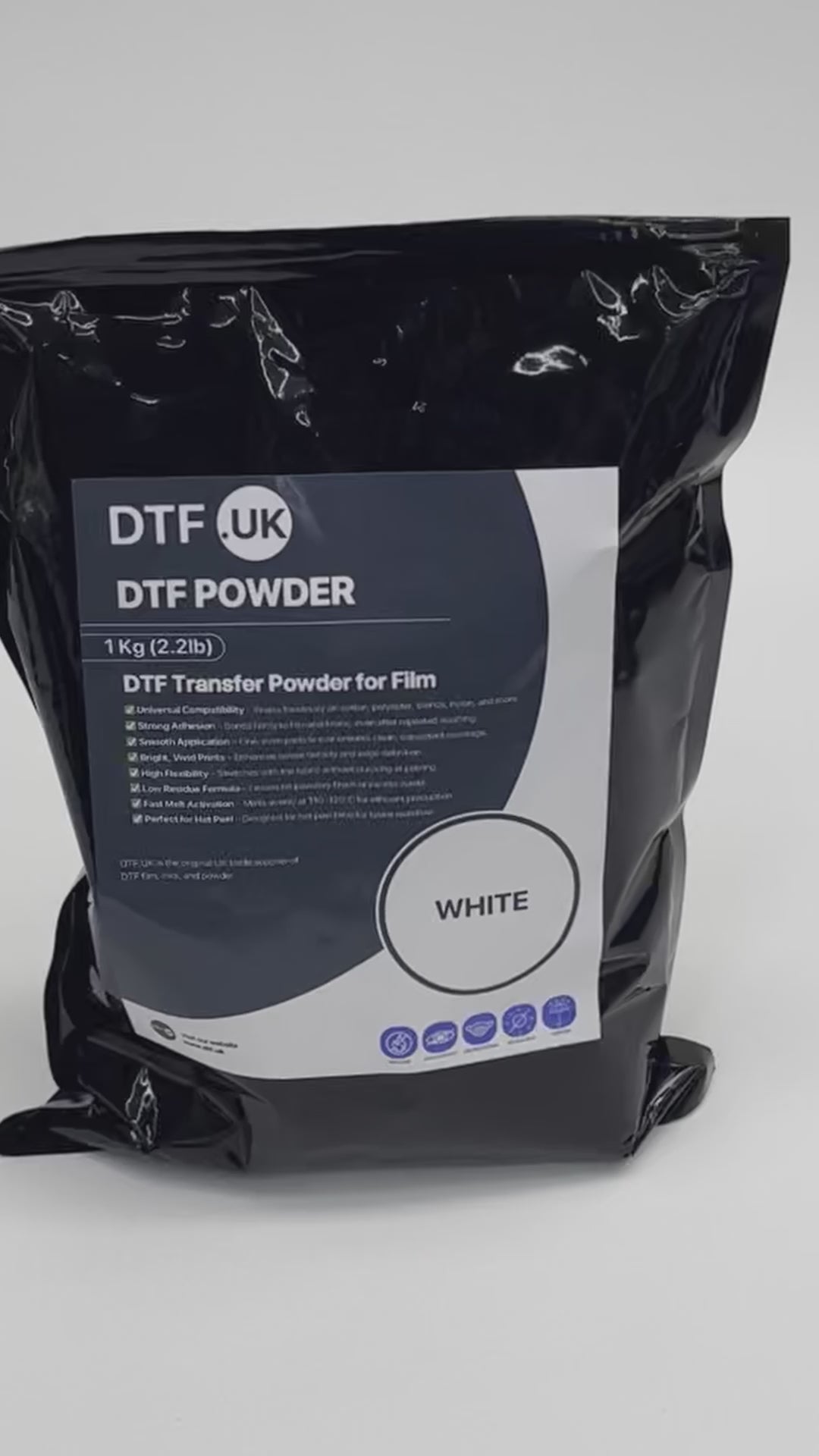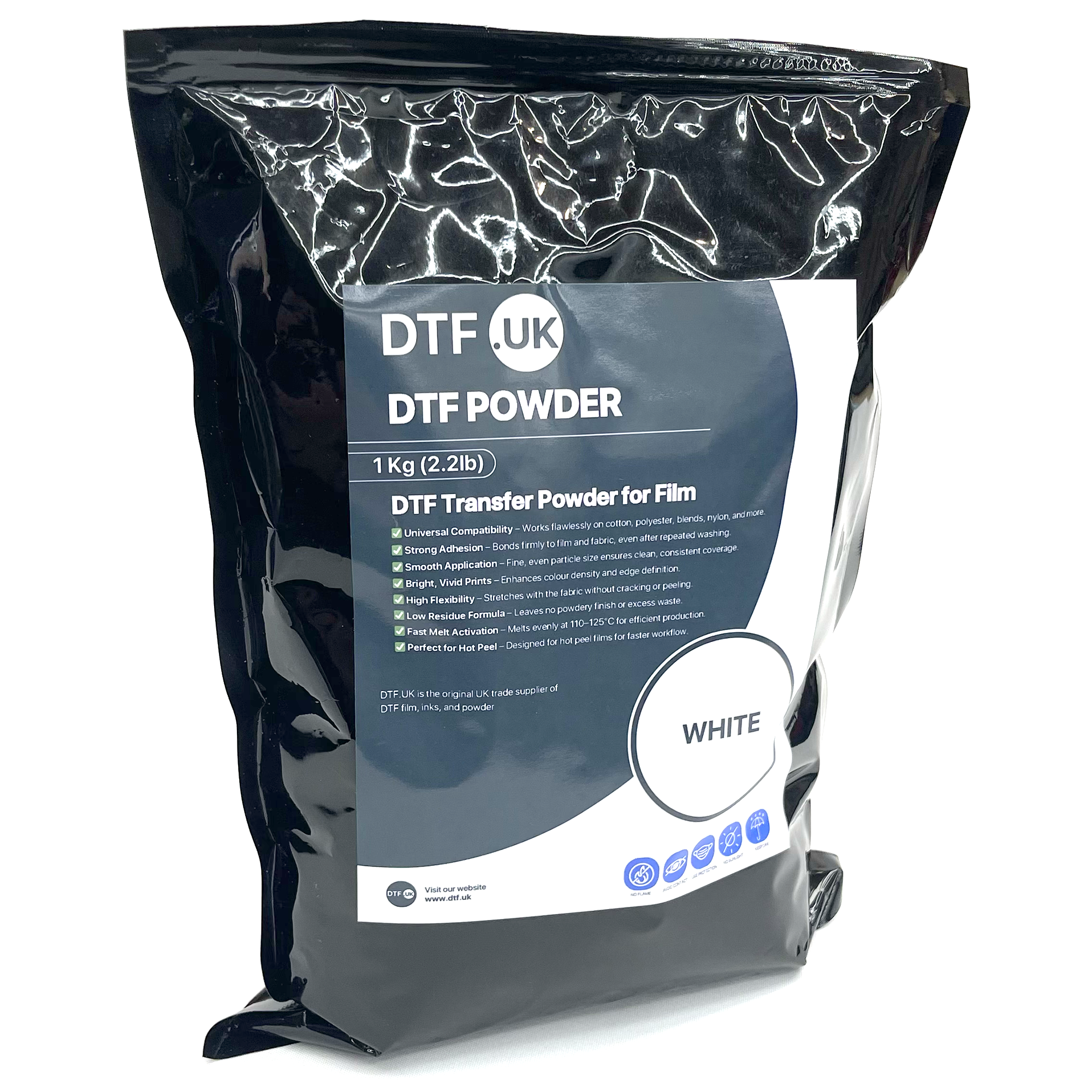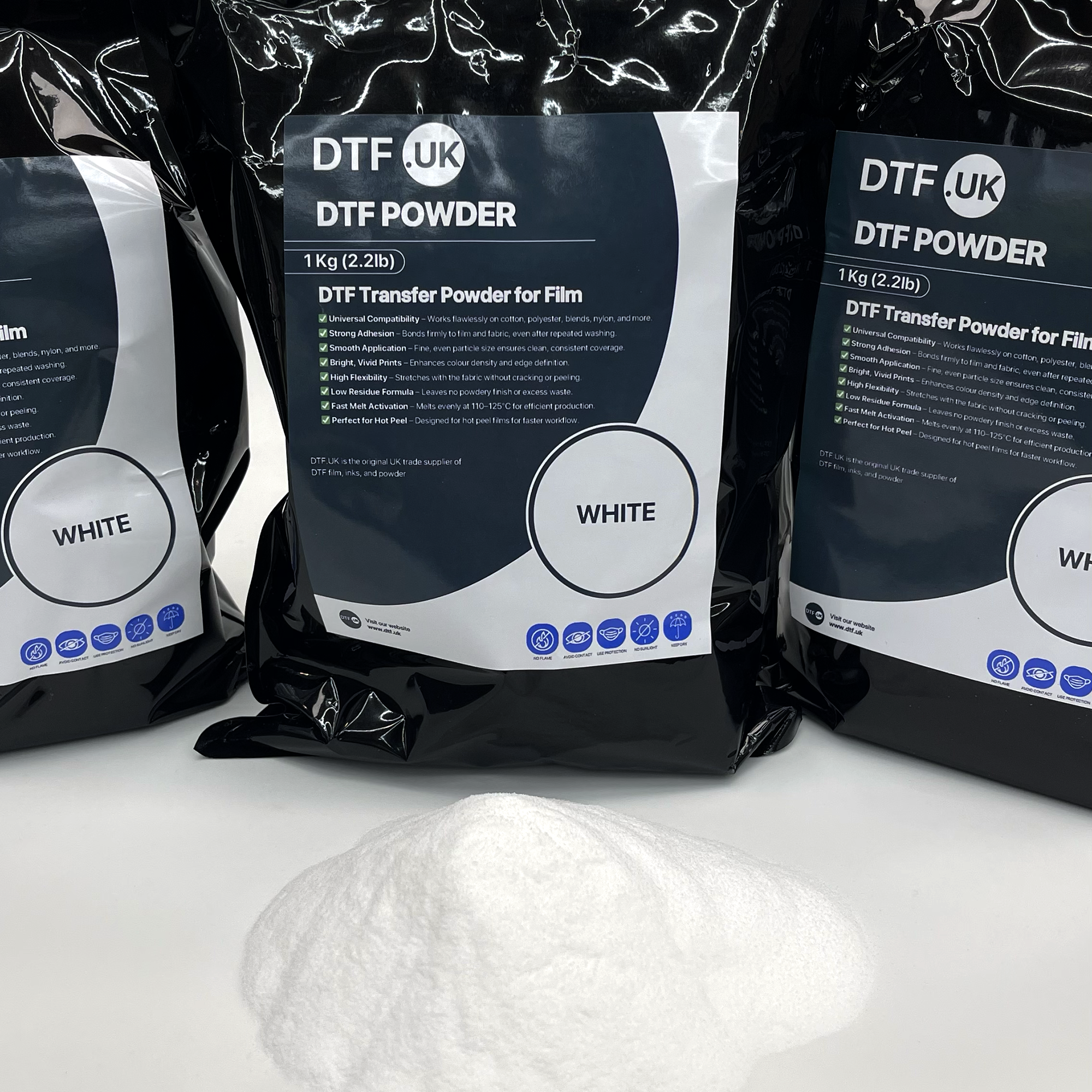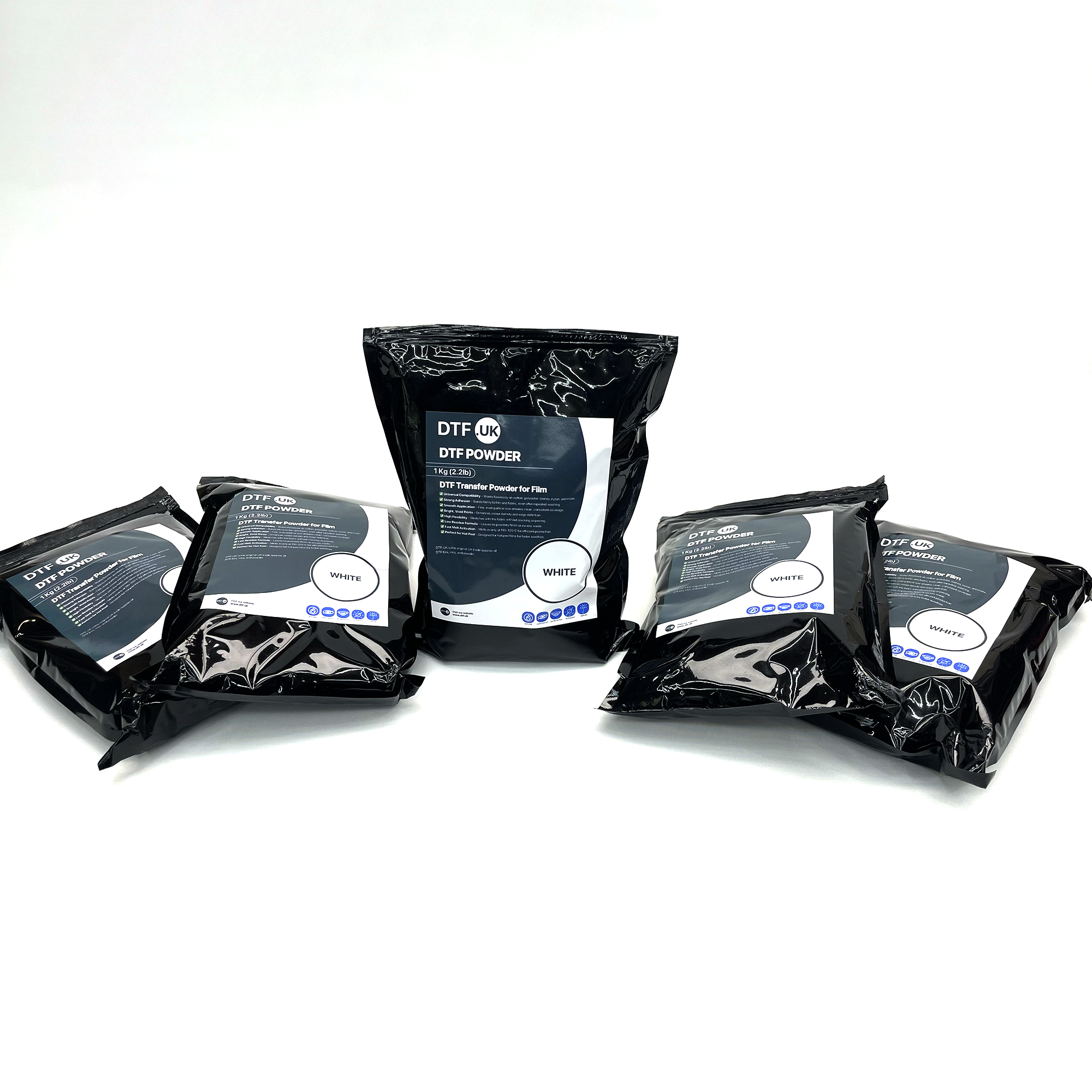DTF Powder 1kg: Hot Melt Adhesive Powder for DTF Printing
Direct to film (DTF) printing has revolutionized the garment decoration industry, offering a versatile solution for creating vibrant and durable prints. At the heart of this technology lies DTF powder, specifically hot melt adhesive powder, a crucial element that ensures the successful application of DTF transfer powder. transfer of ink onto various fabrics.
Introduction to DTF Powder
What is DTF Powder?
DTF powder, also known as DTF adhesive powder or hot melt powder, is a thermoplastic polymer in powdered form used in DTF transfer. This adhesive powder is applied to the wet ink on the DTF film after printing with a DTF printer and before the curing step, enabling the printed design to adhere to the film roll effectively during the printing process. garment during the heat transfer, a technique enhanced by using premium DTF film. process.
Benefits of DTF Powder
The use of DTF powder in DTF printing offers several benefits, primarily centered around the quality and longevity of the final print. These benefits include: improved wash resistance with premium DTF film.
- Excellent adhesion to a wide range of fabrics, including cotton, polyester, and blends.
- The creation of a soft, flexible, and durable DTF print that can withstand numerous wash cycles is made possible with high-quality DTF transfer film.
This ensures that the transfer is vibrant and long-lasting on the target garment or item.
Understanding DTF Printing Technology
Direct to film or DTF printing involves printing a design onto a special PET film, commonly used in the production of DTF transfer film. or transfer film using a DTF direct to film printer that uses specialized DTF ink, including white ink. After printing, the DTF powder is applied to the wet ink, the excess powder is removed, and the film is heated to cure the adhesive powder. This printed film is then heat pressed onto the garment.
Types of DTF Powder
White DTF Powder vs. Black DTF Powder
Most DTF powder is white, but black DTF powder options are also available. The selection between white and black DTF powder depends on several factors:
- The color of the garment being printed on.
- The desired aesthetic of the final product.
White DTF powder is generally used for light-colored garments, while black DTF powder is often preferred for dark-colored garments to enhance opacity.
Hot Melt Adhesive Powder Variants
Selecting the correct DTF hot melt powder is crucial and depends on several factors. These factors include: the quality of the DTF transfer film used.
- The specific DTF printer and DTF ink being used.
- The type of garment you are working with.
Different types of DTF powder also have different particle sizes, affecting the smoothness and detail of the DTF transfer. Furthermore, various hot melt adhesive powder variants are available, each with different melting points, adhesion properties, and wash resistance.
Premium DTF Powder Options
Premium DTF options offer a variety of DTF transfer film choices for different applications. superior adhesion, washability, and overall print quality. These high-quality DTF powders are formulated to provide a softer hand feel and enhanced durability, making them ideal for applications where the DTF print needs to withstand frequent washing and wear. Using best DTF printers utilize advanced DTF hot melt adhesive powder. materials assures customer satisfaction and longevity of the DTF transfer.
DTF Printing Process
Preparing DTF Film and Powder
The DTF printing process begins with the preparation of the DTF film and DTF powder. The film, often a crucial part of the direct to film printing process. PET film, is loaded into the powder shaker for even distribution. DTF printer. It's critical to choose a film sheet that is compatible with DTF pretreat powder for optimal results. DTF ink for optimal transfer results. The DTF hot melt powder is kept ready for application immediately after printing, usually in a shaker, which is used to evenly distribute DTF transfer powder. for even distribution. Careful preparation ensures consistent adhesion.
Using a DTF Printer
Operating a DTF printer involves printing the desired design onto the DTF film using specialized DTF ink. This direct to film process requires careful calibration of the printer settings, including color profiles and DTF pretreat adjustments for optimal output. ink density, to achieve accurate and vibrant DTF prints. The printer applies the ink to the transfer film in a mirrored image, ready for powder application and subsequent heat transfer.
Applying DTF Ink for Optimal Results
To achieve optimal results with DTF printing, the proper application of DTF pretreat is essential for optimal results. DTF ink is crucial for achieving high-quality prints with DTF transfer hot melt. DTF ink formulations are designed for compatibility with DTF powder and PET film, ensuring excellent adhesion and vibrant colors. Using white ink as an underbase is essential for printing on dark garments, allowing the colors to stand out vividly. Ensure that the ink is evenly distributed across the film for consistent transfer.
Adhesion and Curing Techniques
Understanding Adhesion in DTF Transfers
Adhesion is a critical factor in the success of DTF transfers. Effective adhesion ensures the printed design firmly bonds to the garment, resulting in a durable and long-lasting DTF print. The quality of the DTF adhesive powder and the curing process significantly influence adhesion. Proper heat press settings are vital for activating the hot melt adhesive powder and achieving optimal bonding.
Curing DTF Transfers Effectively
Effectively curing the DTF transfer is vital for ensuring durability. This process involves heating the DTF powder on the film to its melting point, allowing it to properly bond with the DTF ink. Curing can be achieved using a curing oven or a heat press. Proper curing ensures the adhesive powder melts evenly, creating a strong bond for the heat transfer process and improving wash resistance using premium DTF film.
Heat Press Techniques for DTF Printing
Heat press techniques play a vital role in DTF printing. The heat press is used to transfer the printed film onto the garment, applying the necessary heat and pressure to activate the DTF adhesive. Proper heat press settings, including temperature, pressure, and dwell time, are crucial for achieving optimal adhesion and preventing issues such as peeling or cracking. Consistency in heat transfer is key to a quality DTF print.
Applications of DTF Powder
Garment Printing with DTF
One of the primary applications of DTF powder lies in garment printing. Using a DTF printer and DTF ink, intricate designs can be printed onto a film roll. DTF film. The adhesive powder is then applied, ensuring the ink adheres to various garment types, including cotton and polyester. This transfer printing method offers vibrant and durable DTF prints, making it an ideal solution for custom apparel.
Sublimation vs. DTF Printing
When comparing sublimation and direct to film (DTF) printing, it's essential to note their distinct advantages. Sublimation typically works best on polyester fabrics using sublimation ink and a sublimation printer, while DTF transfers excel on a broader range of materials. The DTF printer’s, particularly in the context of UV DTF technology. versatility, coupled with the adhesion provided by DTF adhesive powder, makes the choice of DTF transfer powder critical for achieving desired results. DTF printing an excellent choice for diverse garment applications where sublimation might fall short.
Practical Uses of DTF Transfers
The practical applications of DTF transfers extend beyond just garment decoration can be enhanced using heat transfer printing techniques. The DTF film transfer technique is used in creating custom labels, promotional items, and even personalized accessories. The adhesion properties of DTF hot melt powder allow for the use of DTF hot melt adhesive powder in the printing process. transfers onto items such as bags and hats, showcasing the versatility of DTF printing. Businesses use DTF powder to create branding materials.
Conclusion
Summary of DTF Powder Benefits
In summary, the benefits of using DTF powder are significant. Its role as a hot melt adhesive powder ensures excellent adhesion of DTF ink to various garments when using A3 DTF technology., creating durable and vibrant DTF prints. Whether using white DTF powder or black DTF powder, the transfer printing process offers a versatile solution for diverse applications. Properly cured prints offer superior quality.
Future of DTF Printing Technology
The future of DTF technology lies in innovations like UV DTF. DTF printing technology looks promising. Ongoing advancements in DTF ink formulations and direct to film powder are expected to enhance print quality and durability. Innovations in DTF printer technology will likely lead to faster printing speeds and improved automation. As demand for custom apparel and personalized items increases, DTF transfers will continue to play a crucial role in the transfer printing industry.
Choosing the Right DTF Powder for Your Needs
Choosing the right DTF powder is essential for achieving optimal DTF transfer results. Factors to consider include the type of garment, the DTF ink being used, and the desired level of durability. Opting for a premium DTF option may be worthwhile for applications requiring direct to film printing techniques. enhanced wash resistance and a softer feel. Always ensure the adhesive powder is compatible with your DTF printer and DTF film to avoid issues with DTF inks and DTF film. adhesion or curing.
